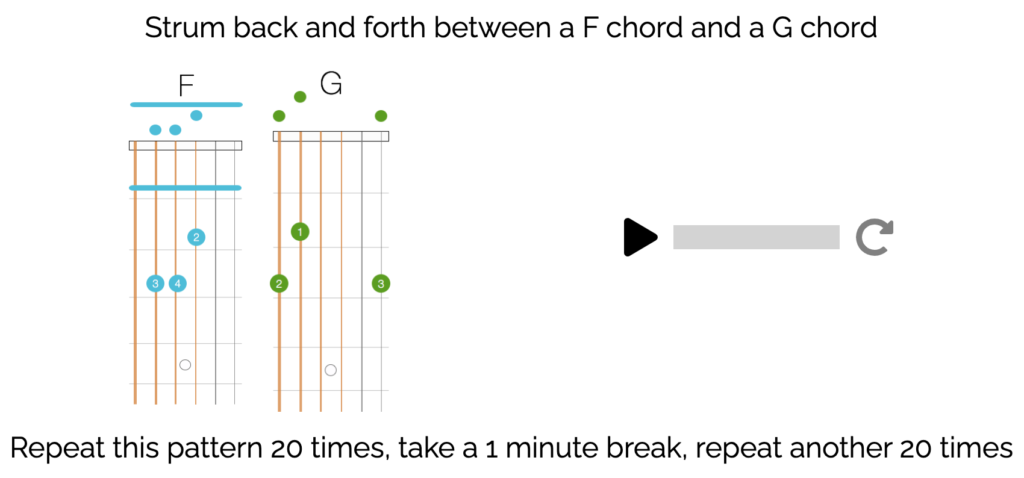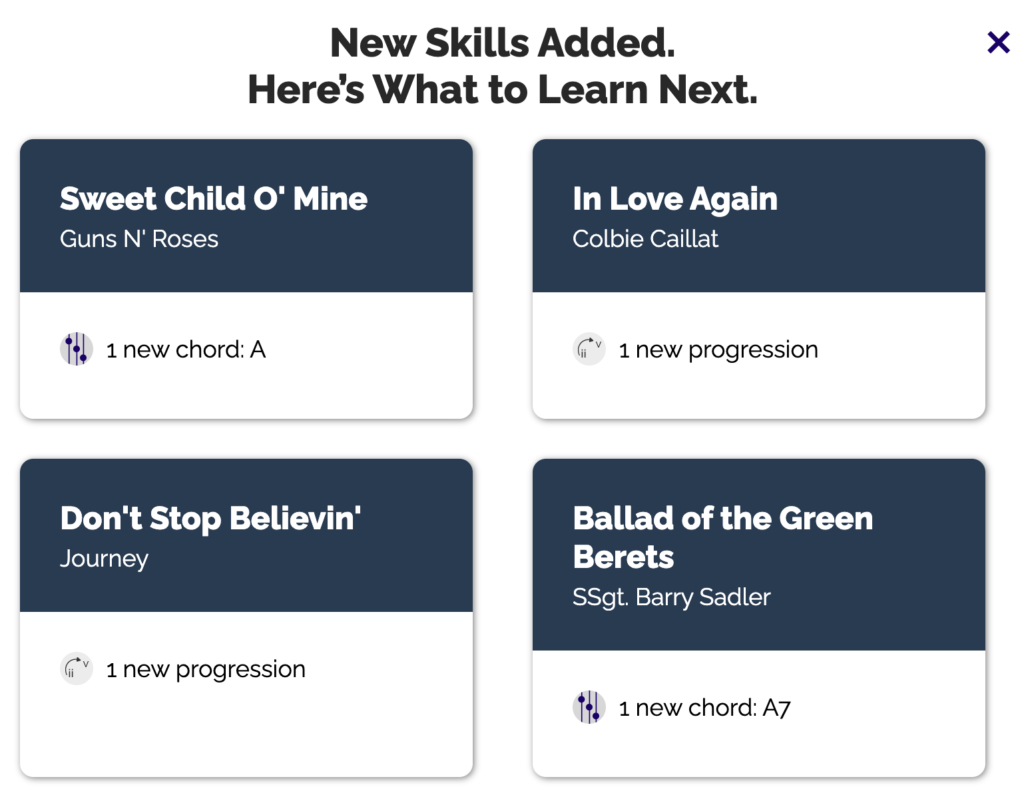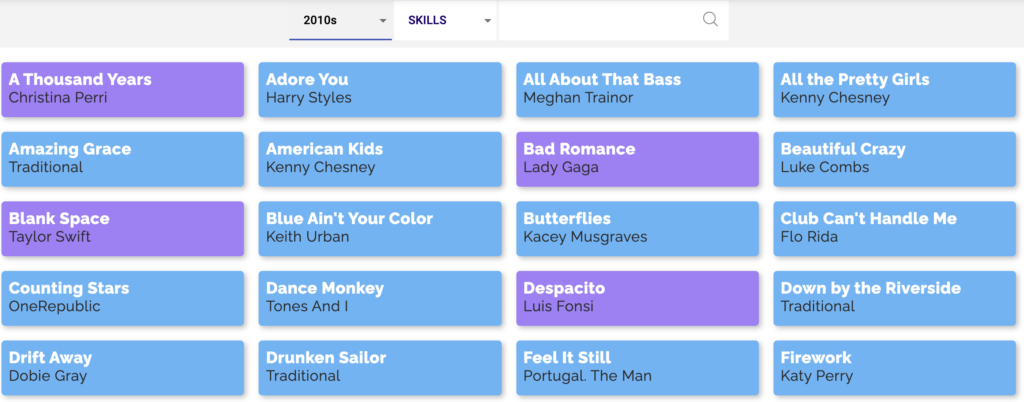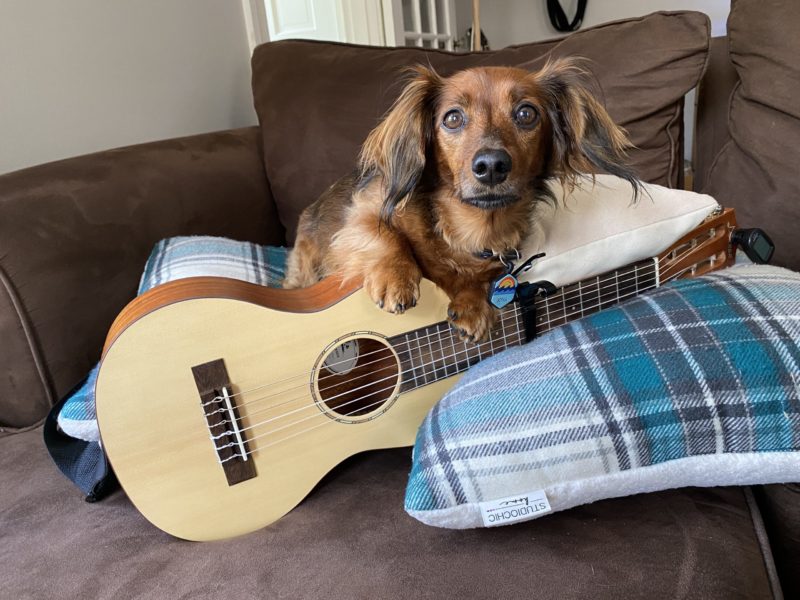In our approach to creating more effective learning and teaching methods, we have always been drawn to other similar disciplines such as coaching in sports, habit building in behavioral psychology, and animal training to fully understand the underlying principles of skill building. Our founder’s wife is a renowned positive association dog trainer and after a lengthy discussion about shaping behavior in dogs, we realized many of the same principles apply to learning guitar.

No, we’re not saying students are dogs. But we are saying that the principles in reinforcement, motivation, and skill building are similar for a dog learning to do a rollover and a human learning to play a song.
Here are 8 tips used in dog training that also apply to learning the guitar.
1. Raise difficulty in small increments so subjects can easily accomplish each task
A dog needs to know how to lie down before they can rollover. A student needs to know how to easily transition between two chords before playing a progression and before playing a song. Mastering and reinforcing each incremental step is critical to master more difficult skills. Moving too fast will cause subjects to become frustrated and confused which is the top detriment to learning.

2. Train one thing at a time
Asking students to practice and learn basic chords and melody playing in the same session is too much of a mental hurdle. Remember that learning and skill building requires constant mental focus and attention. The burden of focusing (or task switching) on too many things at once exceeds our mental capacity and leads to confusion and exhaustion. This doesn’t mean you can’t learn two skills in parallel (one in the morning and one in the evening), just don’t try to shove them into a single session.
When training dogs to loose-leash walk and heel, make sure to split them up. Train loose-leash walking first and once they’ve mastered that, train heel.
3. Use variable reinforcement as a way to strengthen the desired skill
When training recall with a dog, trainers will start by giving a treat every time the dog successfully comes back upon command. Owners think that this builds a habit of always having to hand out a treat to continue behavior. The opposite is actually true where by rewarding intermittently, dogs exhibit stronger behavior because they are even more motivated if they don’t receive a treat. Good trainers will then only reward for this strong behavior, further strengthening the desired skill.
Don’t heap praise on students every time they accomplish a task. Start to vary your praise and be selective about only rewarding when students exhibit an exceptional performance or accomplishment. This selective rewarding is a subtle but powerful way to hone skills. Coaches do similar things with athletes by constantly raising their bar to praise. This is what turns good athletes into olympic athletes.
4. When introducing new skills, relax the old
Kind of related to #2, when learning new skills, don’t expect the same level of performance for the old skills. Learning strumming is a perfect example. A student may be fluent in playing a chord progression with simple quarter-note down stums on the left hand. But once you introduce a more complex right-handed strumming pattern, their left hand totally forgets how to play that chord progression! Don’t fret (get it), stay focused on learning the new strumming pattern even if the chord transitions are sloppy. Once the strumming pattern becomes more natural, the muscle memory in the left hand will return and the student will be able to do both at once. This can be a big cause of frustration for students so it is important to reinforce this point. By helping them understand this point, you can keep them focused and motivated . Your rubric and grading should also reflect this.

5. Stay ahead of students and plan for “breakthrough” moments
In the book Don’t Shoot the Dog, author Karen Pryor says that orca trainers often fall into this trap. Orcas learn so quickly that what trainers thought would take days to learn, only takes a few minutes. We need to take advantage of these “breakthrough” moments when skills develop very quickly by having a plan for what to do next. We don’t want to inhibit a student’s learning journey just because we’re not prepared or the next step in the curriculum isn’t for a few weeks. Always be several steps ahead of students.
This is exactly why at Moosiko our core learning technology is adaptive. If one student masters basic chords the first week, they can move onto bar chords or strumming patterns right away, even if the rest of the class is still learning G, C, D.

6. There are endless ways to teach guitar and dog skills
Everyone seems to have a method or curriculum for teaching guitar. The Berklee method, Hal Leonard, Mel Bay, Justinguitar, the private instructor down the street…this list goes on. Even we claim to have the Moosiko Method! They all work. The problem is thinking that your method is the only method. If you’re thinking, “well we’ve always done it this way”, then you are probably falling behind.
What we love about the music community is the creativity and uniqueness that every teacher brings. If a lesson isn’t working, connect with other teachers to learn their methods, tips, and tricks. Every class, every student, and every learning challenge is unique. If you’ve taught even just one student or trained one dog, you have something valuable to share.
7. If a skill deteriorates, go back to the basics
Dog owners experience this all the time. “My dog has always come back when called, I don’t know why he’s not doing it anymore”. Most of us try to figure out and focus on the reason why, which is not important. Just go back to the basics and practice or train recall. Behavior will usually come back quickly.
After a school break, the summer, or an extended period of time not playing specific skills, students may slightly relapse. This is fine. Just spend a short session practicing the basics and working on fundamentals and the skills will return quickly. Moosiko’s fun songs make it easy for students to pick songs they love. The best athletes in the world are always working on the basics.

8. Quit while you’re ahead
This is a hard one for teachers because if the class if 50 minutes you feel you need to teach for 50 minutes. But the real goal in a learning environment is to…learn a skill. If students can accomplish this in 20 minutes, job well done! If you try to cram in as much material as possible in 50 minutes, students may end the class feeling frustrated. Since most of us remember the last thing we did, we want to make sure we end on a positive note. We want students coming to each class feeling like they ended the previous class with a great accomplishment.
But if every student learns at a different rate, how can we do this? Here are some tips:
- See #5. Make sure you can accommodate fast learners and slow learners at the same time
- Keep the last 20 minutes of class as free time. This allows slow learners to keep practicing to end on a high note and fast learners to have fun playing songs or helping others if they’ve already accomplished the goal.
- Encourage peer-to-peer learning so that fast learners can help slower learners.
With your dog, if they master rollover in 15 minutes, quit or take a break before working on something new. Ending on a high note builds trust and a sense of collective accomplishment which provides a great starting point for the next challenge.

“I put the capo way up here cause my paws are so short” – Sophia
If you’re interested in learning more about how to apply these principles for your guitar class, get in touch here and we’ll be happy to discuss further.
